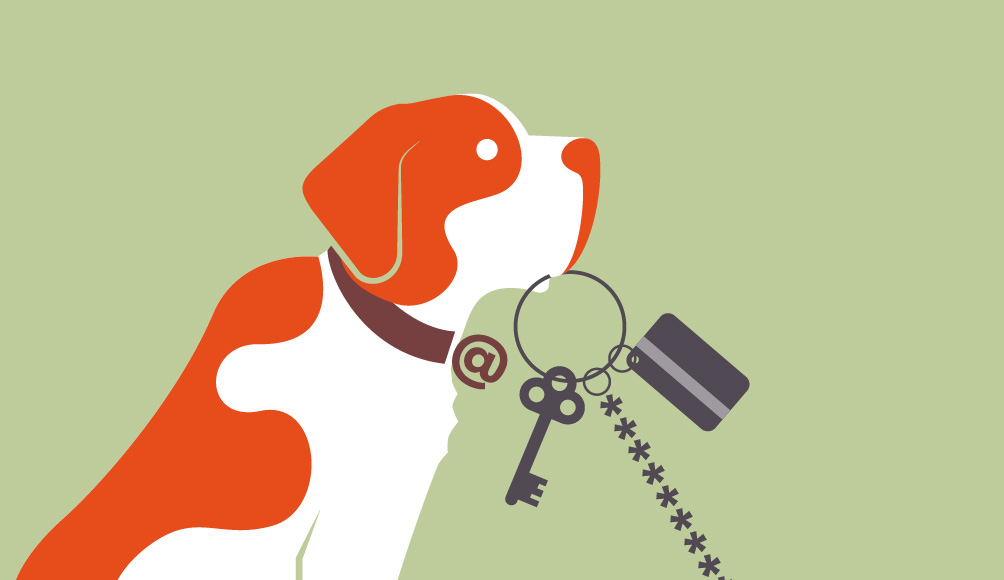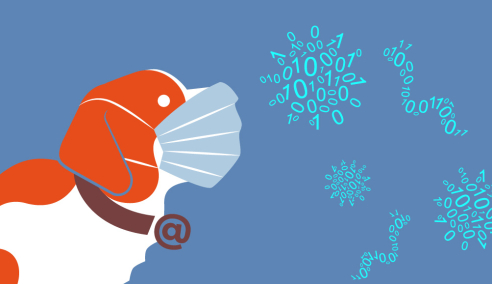Safe Passwords: Protect yourself and your data
Safe surfing
Many internet users think that it will never happen to them. But what if it does? What if the password you use to access an online store is stolen and happens to be the same as the password you use to access your Facebook or email account? As a result, cybercriminals are free to log in, place orders at your expense, take out contracts or send messages in your name, change your profiles and more. Choose safe passwords and for each account its own - we show you how.

Safe passwords...
- ...contain 12 characters or more;
- ...include upper- and lower-case letters, numbers and special characters;
- ...are strings of characters that are not found in any dictionary;
- ...do not contain names or other identifying information about you or your family;
- ...are unique and different for each account.
How thieves steal your passwords
Data breaches
Cybercriminals use data breaches at large online companies to steal millions of usernames and passwords all the time. Researchers estimate that billions of user accounts have been affected over the years. Therefore, it is important to use a different password for each account. Check here to see if you are affected.
Weak passwords
“Hello!”, “123456”, “password1” and “asdfgh1” are among the most common passwords in Switzerland. This makes it particularly easy for hackers to crack your passwords by using automatic programs that test thousands of dictionary entries combined with number combinations in a matter of seconds. After data breaches, weak passwords are among the top causes of network security breaches.
Check here to test how strong your password is.
Phishing
Cybercriminals also steal your login data through phishing (email manipulation). Find out how you can protect yourself from phishing scams.
«Use a password manager.»
Password generator
Set your security level (number of characters) on this german tool by changing the slider «Wählen Sie Ihren Sicherheitslevel».
Then click on «Passwort generieren».
Absolute confidentiality: Passwords are generated exclusively on your device and are not stored by us.
How can I remember so many different passwords? A password manager helps you out!
You are advised to use a different password for every service. However, given the vast amount of online services available today, remembering all your passwords without writing them down is nigh on impossible. Keep your passwords in a safe place, not on a piece of paper next to your PC, in your calendar or in a booklet. The same applies to computers and smartphones: Do not create unprotected password files.
Use a password manager instead. Password managers are easy-to-use applications that help you manage your passwords automatically by creating, storing and encrypting them.
The data protection officer of the Canton of Zurich assessed the most popular password managers (see "Merkblatt Passwortmanager").
In January 2020, the German consumer group Stiftung Warentest also tested 14 password managers, three of which were rated «good»:
- «Keeper security»: ca. 30 CHF/year
- «1Passsword» (AgilBits): ca. 36 CHF/year
- «KeePass»: free
Source: Stiftung Warentest, issue: 02/2020. Prices as at February 2020
A mnemonic to remember your master password
If you use a password manager, you must choose a “master password” with which to start the software and display your stored passwords. This password should be particularly strong. Choose a long and complex password containing upper- and lower-case letters, numbers and special characters.
But how do you choose and remember a long and complex string of characters? Here are two options:
Option 1: Songs
Take a couple of lines of your favourite song and turn them into a password:
Workin' 9 to 5, what a way to make a livin' / Barely gettin' by, it's all takin' and no givin'
= W925,wawtmalBgbisatang
Option 2: Sentences
Think of a long, easy-to-remember sentence, for example:
I saw two Shetland ponies, each with one foal, grazing on the mountainside.
= Is2Sp,ew1f,gotm
Protect yourself with a second means of authentication
Many online service providers supplement the normal login password with a second means of identification. iBarry recommends setting up a second factor wherever possible, especially for important accounts such as email, social media, bank accounts, health insurance or other types of insurance. Learn more about two-factor authentication.
Additional information
Passwort-Sicherheit: Wie schütze ich meine Online-Accounts?
Schweizerische Kriminalprävention15 Tips To Better Password Security
Mc AfeeStrong passwords: 9 rules to help you make and remember your login credentials
C NetHow to create a strong password
Avast blogTake These 7 Steps Now to Reach Password Perfection
Wired



